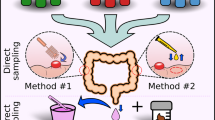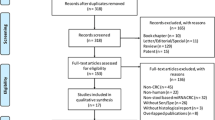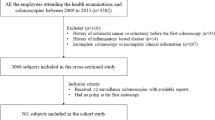Abstract
Rectal mucosal proliferation was measured in 116 individuals using the metaphase arrest technique crypt cell production rate (CCPR). CCPR was found to be significantly elevated in individuals with adenomas (n = 42, CCPR = 13 cc c-1h-1, range 7-25 Cl 10-15) compared with normals (n = 21, CCPR = 10 cc c-1h-1 range 5-24 Cl 7-11, Mann-Whitney P = 0.001 z = 3.2). Mucosal proliferation was increased among individuals who were undergoing adenoma follow up but in whom no further adenomas were found (n = 37 CCPR = 12 range 5-26 cc c-1h-1 Cl 10-14) compared to controls (Mann-Whitney P = 0.01 z = 2.4) Proliferation in vegetarians i.e. low risk (n = 16) was similar to controls. Measurement of proliferative indices in rectal mucosa by the stathmokinetic technique CCPR can discriminate between high and low risk groups for colorectal cancer.
This is a preview of subscription content, access via your institution
Access options
Subscribe to this journal
Receive 24 print issues and online access
$259.00 per year
only $10.79 per issue
Buy this article
- Purchase on Springer Link
- Instant access to full article PDF
Prices may be subject to local taxes which are calculated during checkout
Similar content being viewed by others
Author information
Authors and Affiliations
Rights and permissions
About this article
Cite this article
Rooney, P., Clarke, P., Gifford, K. et al. The identification of high and low risk groups for colorectal cancer using rectal mucosal crypt cell production rate (CCPR). Br J Cancer 68, 172–175 (1993). https://doi.org/10.1038/bjc.1993.308
Issue Date:
DOI: https://doi.org/10.1038/bjc.1993.308



